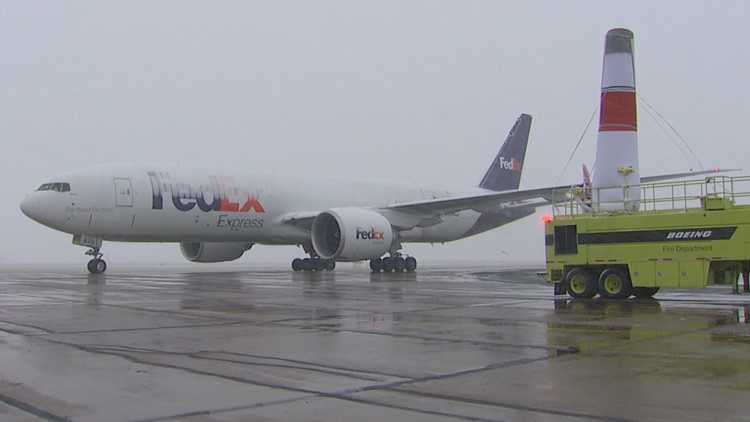Flying is incredibly safe, but that safety record is under siege because airports are getting a lot busier.
Boeing's ecoDemonstrator program is providing a testing platform. It's where new technologies to improve aviation safety are attempted as the skies become more crowded and airports get busier.
Boeing estimates the world’s fleet will double by 23,000 airplanes over the next 20 years, far out-pacing airport real estate. That means more canceled flights, expensive repairs, and risk to passengers.
When you see an airport tarmac, you see planes big and small. But there are also fuel trucks, food and maintenance trucks, baggage tugs and workers -- all potential collisions.
KING 5 was on board for a test of a new radar and camera system meant to help pilots detect dangers on the ground that may be out of their point of view, particularly at night or in severe weather conditions. It's called the Surface Operations Collision Avoidance System (SOCAS).
‘”We’re trying to simulate situations at an airport, where one aircraft might get really close to another one," said Boeing engineer Amelia Wilson. “So if you think of the backup system on your car, it beeps at you when you get too close to something. We’re trying to do the same thing, but for airplanes."
The testing is performed at a former Air Force Base that Boeing now owns near remote Glasgow, Montana. It involves a 777 freighter leased back from FedEx. It's to see if a new radar mounted on the tip of the left wing senses a large, inflatable pylon with a sheet of aluminum taped to it. The pylon is on the back of a Boeing fire truck.
To make sure the radar can see everything, the test is repeated with the truck parked in different spots and at different angles. Even while moving off the taxiway, not unlike one plane follow another.
When a potential collision is detected, a beep goes off in the cockpit.
“We can see all types of radar cross sections reflecting back to our radar, from the snow, from the pavement and what we do is filter out the highest ones that will be reflected off the pylon and the fire truck," said Boeing Electrical Engineer Michelle Warren. “This is research. This is the first time trying something on this big of a platform, so it’s an exciting thing.”
There is promise here but will take years before this system becomes a finished product. The final version could be just an audible warning or could include a camera image, potentially a map in the cockpit.



